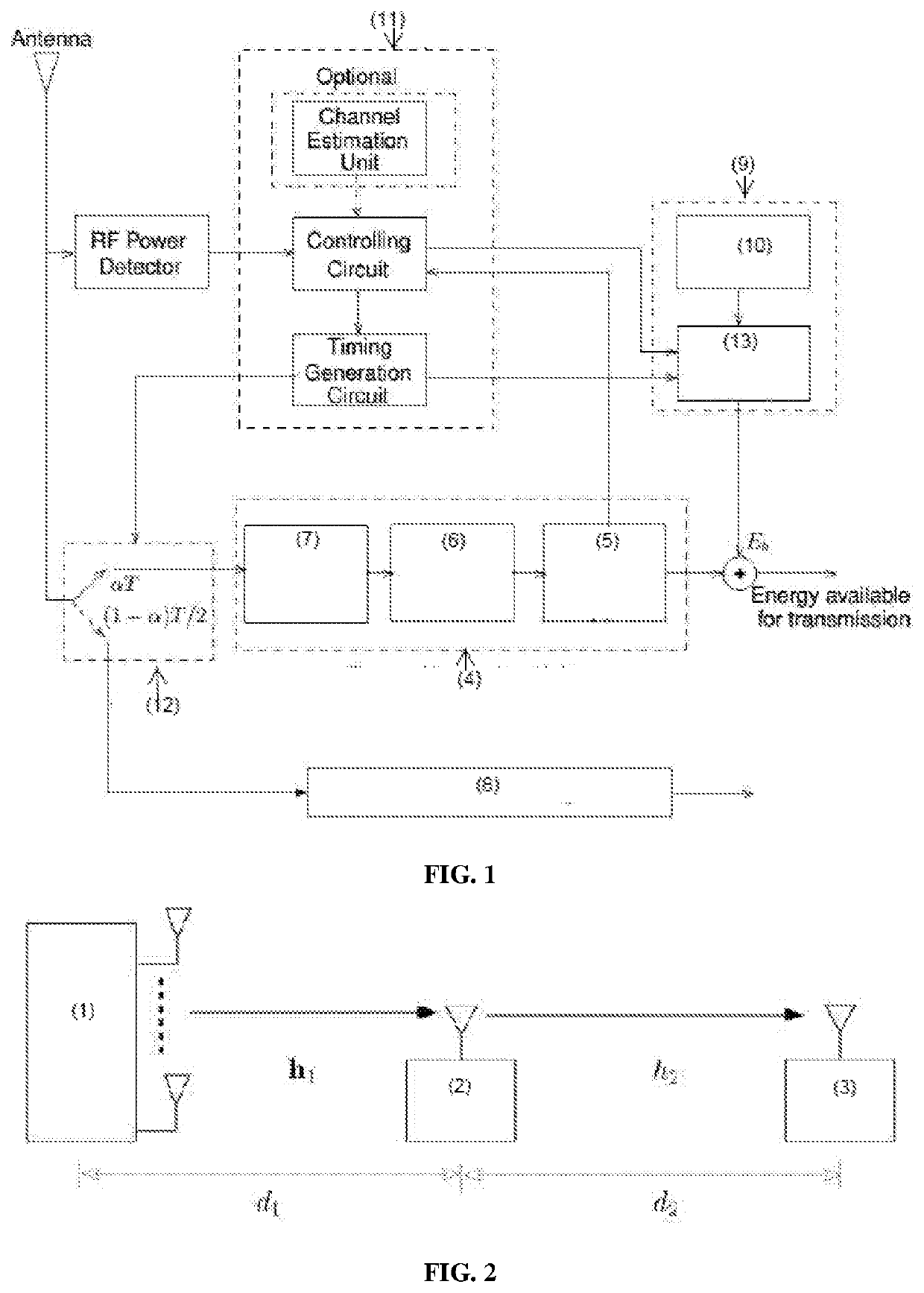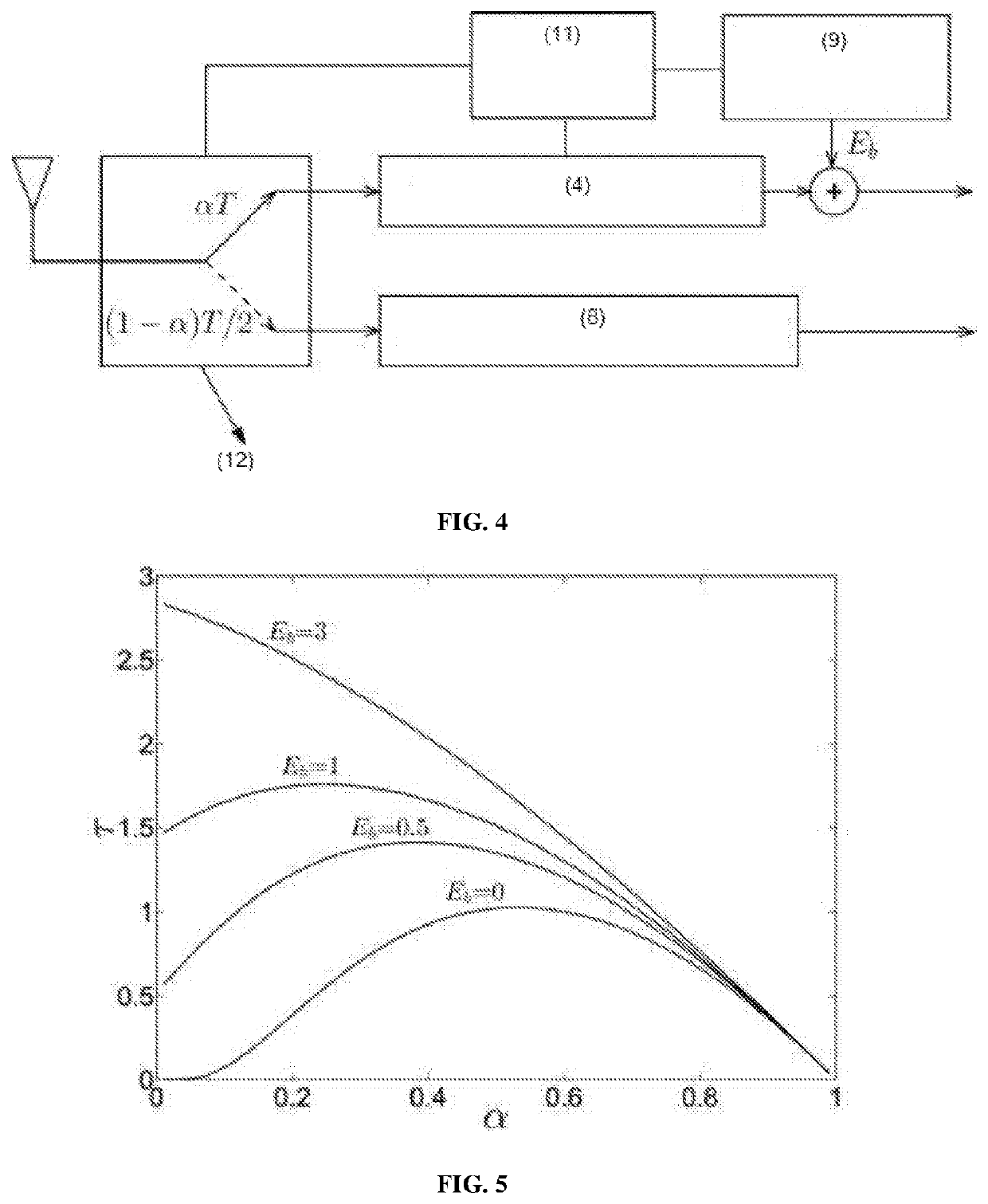Wireless system for improving performance and prolonging battery lifetime of node by energy harvesting
- Summary
- Abstract
- Description
- Claims
- Application Information
AI Technical Summary
Benefits of technology
Problems solved by technology
Method used
Image
Examples
Embodiment Construction
[0028]Provided below is a non-limiting exemplary embodiment of the present invention with described reference of the accompanying drawings.
[0029]FIG. 1 illustrates the block diagram of the (Energy Harvesting) EH relay (2). The sensors have a wireless energy harvesting circuit, which is supplemented by a battery (10) from which variable amount of energy Eb can be drawn as shown in FIG. 1. The amount of energy Eb drawn from battery (10) is controlled through a central controlling unit (11). The energy storage element (5) like super capacitor of energy harvesting unit (4) is connected to battery (10) and central controlling unit (11), so that the augment battery energy extraction is controlled for desired performance. In a typical energy harvesting circuit, the fraction of time spent on energy harvesting (time-switching parameter), or fraction of signal energy diverted for energy harvesting (power-splitting parameter) determine the performance of a communication link with energy harves...
PUM
 Login to View More
Login to View More Abstract
Description
Claims
Application Information
 Login to View More
Login to View More - R&D
- Intellectual Property
- Life Sciences
- Materials
- Tech Scout
- Unparalleled Data Quality
- Higher Quality Content
- 60% Fewer Hallucinations
Browse by: Latest US Patents, China's latest patents, Technical Efficacy Thesaurus, Application Domain, Technology Topic, Popular Technical Reports.
© 2025 PatSnap. All rights reserved.Legal|Privacy policy|Modern Slavery Act Transparency Statement|Sitemap|About US| Contact US: help@patsnap.com



